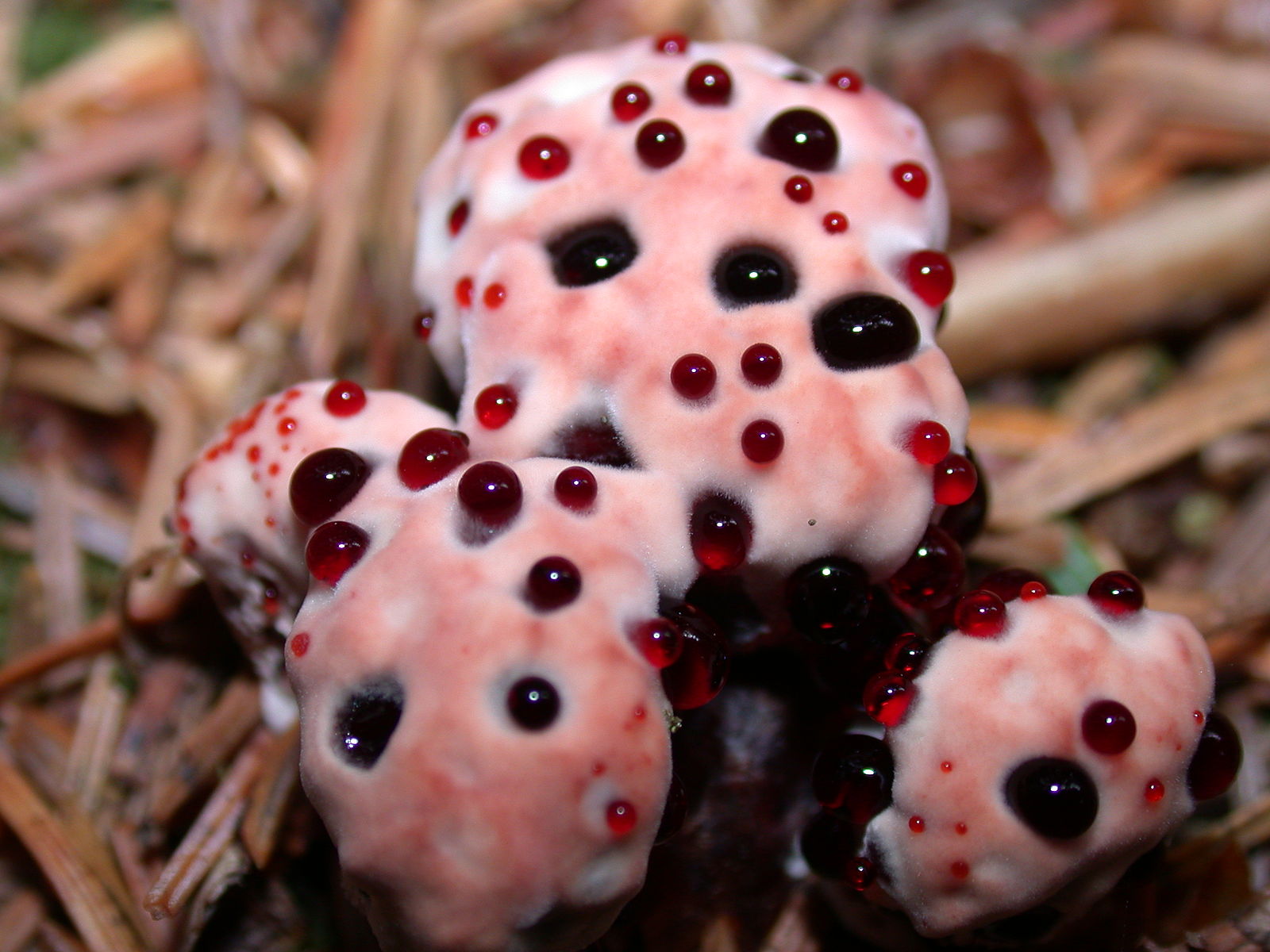You would not like to eat this fungus.
Although many call it strawberries and cream fungus, it's nothing tasty. Other's also call it the bleeding tooth or devil's tooth fungus.
Hydnellum peckii, can be found mainly in North America and Europe. It is not toxic, but it is inedible.
The pictures shows a young specimen which 'bleeds' a red juice. The reason behind this 'bleeding' is high root pressure (guttation), which eases after time as the fungus grows older, and hence the fungus stops excreting the juice. The juice, however, is not always red: it can be pink, yellow, orange and also beige.
As for the 'tooth' in its common name, that refers to the underside of the fungus' cap, where its spores are produced by tiny tooth-like structures.
The chemicals in the fungus' juice (actually in its red pigment called atromentin) exhibit anticoagulantactivity (i.e. they prevent or reduce blood-clotting). Moreover, it has antibiotic properties which are effective against Streptococcus pneumoniae, a bacterium which can become pathogenic under the right conditions, causing infectious pneumonia and meningitis in children and the elderly, or septicemia in HIV-infected people.
The species, along with many, many other fungi plays an important role in the life of plants. It's an ectomycorrhizal species that forms a special relationship with coniferous trees, such as the Norway spruce.
